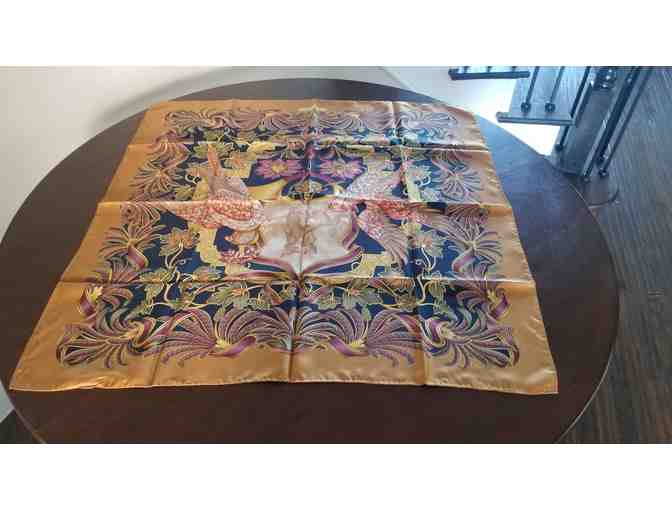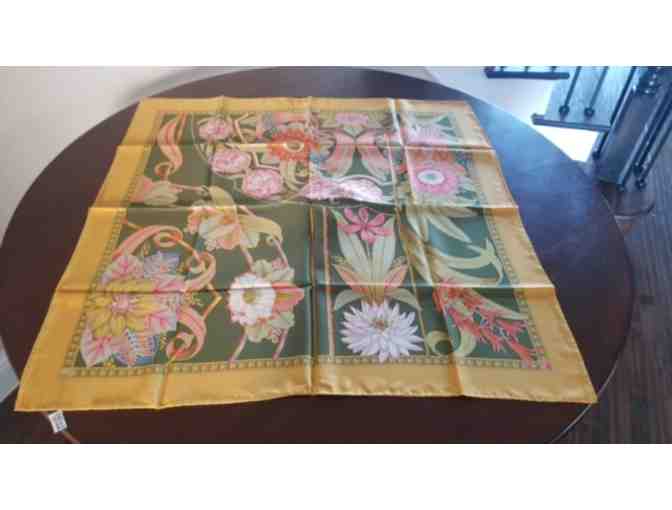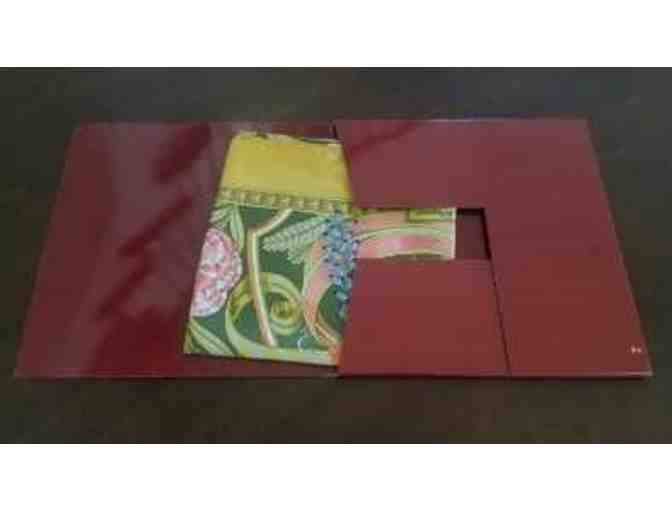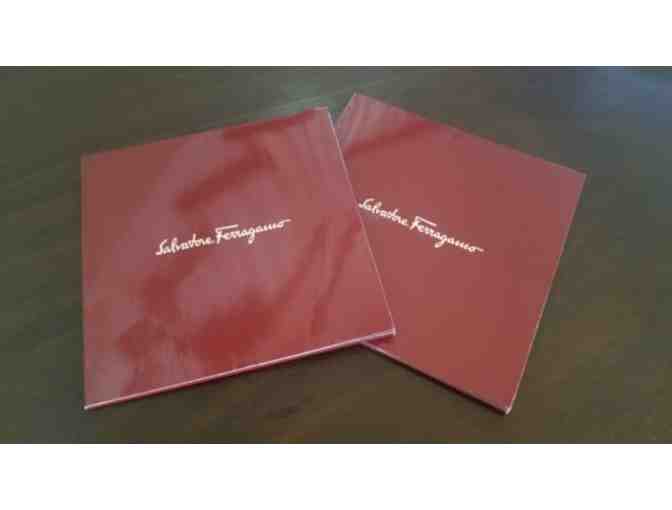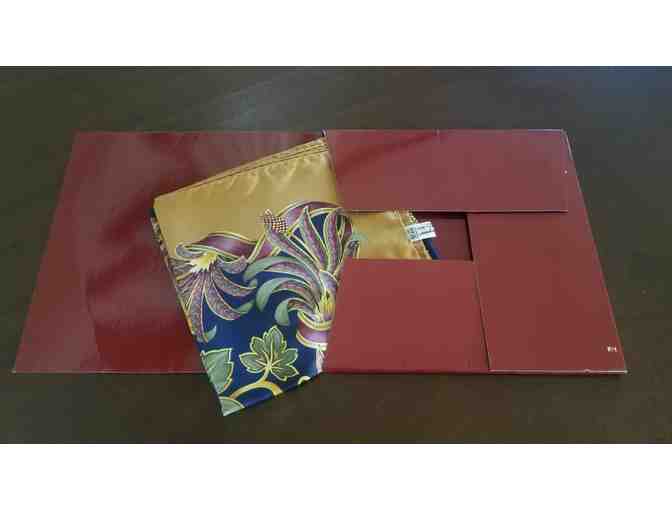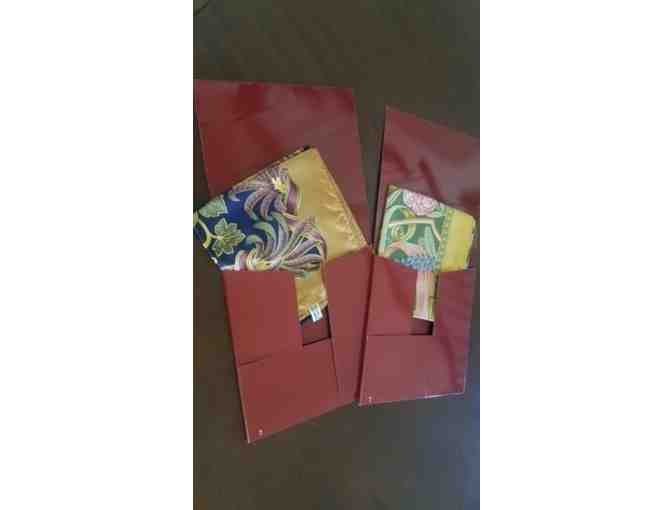Clothing
Ferragamo Silk Scarves (2), Never Used and in Original Gift Boxes!
- Item Number
- 367
- Estimated Value
- 600 USD
- Sold
- 285 USD to eb8addac5
- Number of Bids
- 1 - Bid History
Item Description
Two beautiful Salvatore Ferragamo 32" square Silk Scarves, New in Original Ferragamo Boxes! Please see pictures! Free shipping!
Thank you so very much Tina Branderford for your friendship and support of Constituting America! Constituting America is also very proud of your wonderful and talented son, Brandon!
Salvatore Ferragamo and His Legend:
"The eleventh of fourteen children, Salvatore Ferragamo was born in 1898 in Bonito, a small village 100 kilometres from Naples. Even as a child, Salvatore showed a great passion for shoes: at the age of 11 he was apprenticed to a shoemaker in Naples and at 13 he opened his own shop in Bonito. When he was 16, he travelled to America to join one of his brothers who was working for a large shoe factory in Boston. Salvatore was fascinated by the modern machinery and production processes but he also saw how they could limit product quality.
In the early Twenties he moved to Santa Barbara, California, where he opened a shoemaking and repair shop. California was an exciting place to be at that time with the new film industry booming. Salvatore began designing and making shoes for the movies. Meanwhile, in his ongoing search for shoes with the perfect fit, he studied human anatomy, chemical engineering and mathematics at the University of Southern California in Los Angeles.
When the movie industry moved to Hollywood, Salvatore Ferragamo went with it. In 1923 he opened the ‘Hollywood Boot Shop’, which marked the start of his career as ‘shoemaker to the stars’, as he was defined by the local press.
In 1927 Ferragamo decided to return to his native Italy and chose to settle in Florence, a city known for its many skilled craftsmen. From his Florentine workshop – in which he adapted the assembly line system to his workers’ highly specialised and strictly manual work – Salvatore launched a constant flow of exports to the United States.
Then came the great crisis of 1929, which abruptly brought business with the US market to a standstill and forced the company to close. However, Ferragamo did not lose heart. Instead, he turned his focus to the domestic market. Within a few years, his business was performing so well that in 1936 he rented two workshops and a shop in Palazzo Spini Feroni, via Tornabuoni, Florence. Despite the economic sanctions against Mussolini’s Italy, it was during this time that Ferragamo turned out some of his most popular and widely-imitated creations, like his strong, yet light cork ‘wedges’. In 1938 these successful creations enabled him to pay the first instalment for the purchase of all of Palazzo Spini Feroni, which has been the company’s headquarters ever since. In 1940 he married the young daughter of the local doctor in Bonito, Wanda Miletti, who joined him in Florence and would bear him six children: three sons (Ferruccio, Leonardo and Massimo) and three daughters (Fiamma, Giovanna and Fulvia).
After the war, Salvatore Ferragamo’s shoes came to be known around the world as a symbol of Italy’s return to life, design and production. The years that followed saw many memorable inventions: the stiletto heels with metal reinforcement made famous by Marilyn Monroe, the gold sandals and the invisible sandals with nylon thread uppers (for which Ferragamo won the prestigious ‘Neiman Marcus Award’ in 1947, the fashion world’s equivalent of the Oscar, marking the first time it was bestowed on a shoe designer).
When Salvatore Ferragamo died in 1960 he had achieved his lifelong dream: he had designed and made the most beautiful shoes in the world. He left it to his family to carry on and fulfil another dream that he had nurtured in his final years: transforming Ferragamo into a great fashion brand."
Constituting America stores data...
Your support matters, so Constituting America would like to use your information to keep in touch about things that may matter to you. If you choose to hear from Constituting America, we may contact you in the future about our ongoing efforts.
Your privacy is important to us, so Constituting America will keep your personal data secure and Constituting America will not use it for marketing communications which you have not agreed to receive. At any time, you may withdraw consent by emailing Privacy@frontstream.com or by contacting our Privacy Officer. Please see our Privacy Policy found here PrivacyPolicy.

